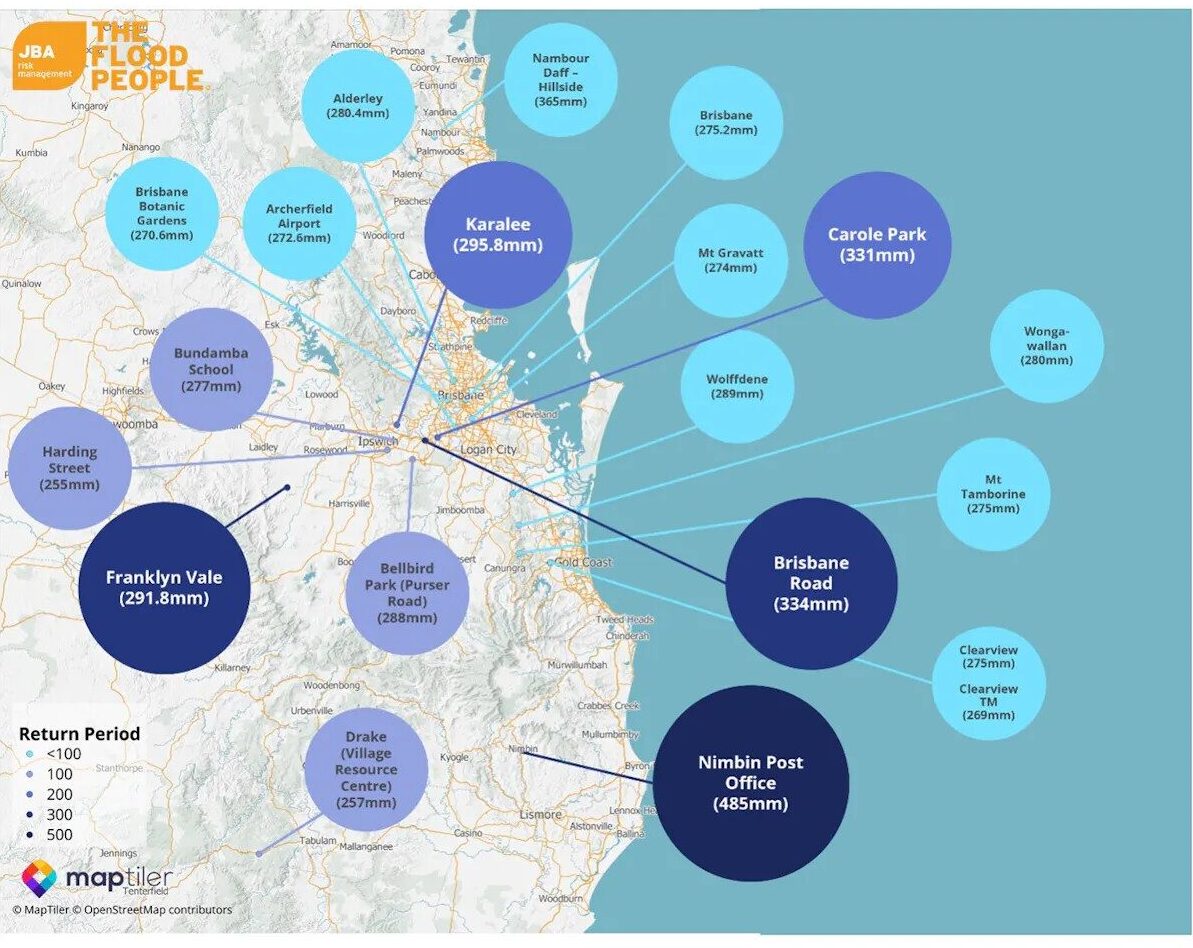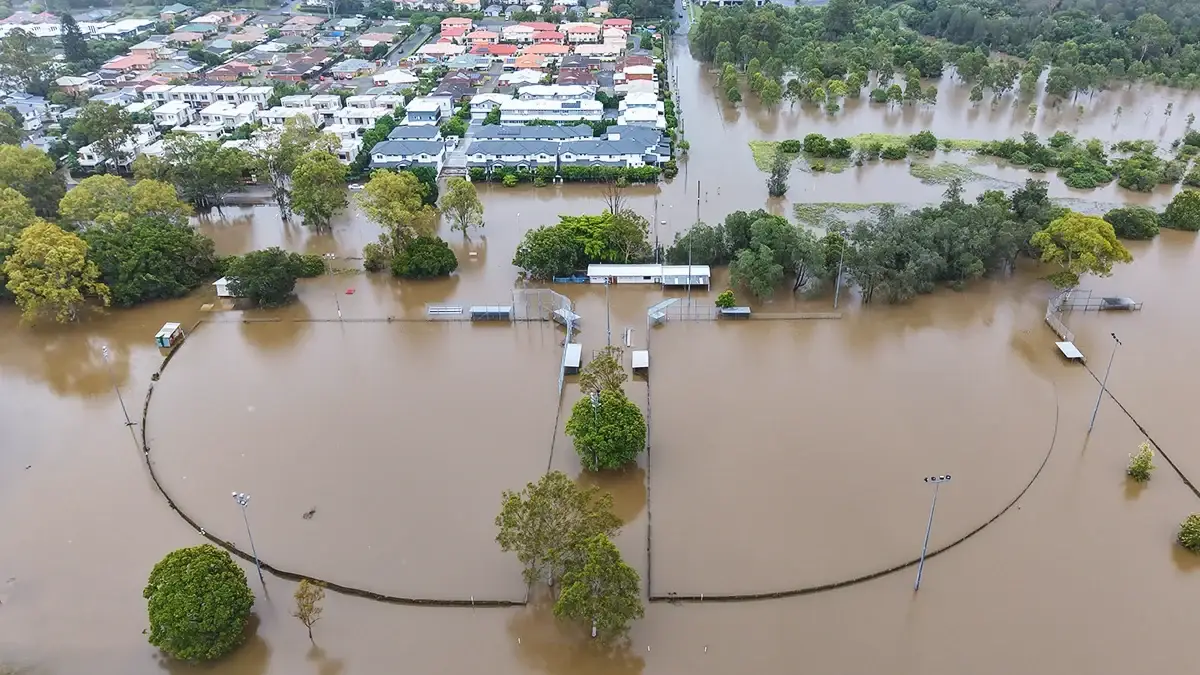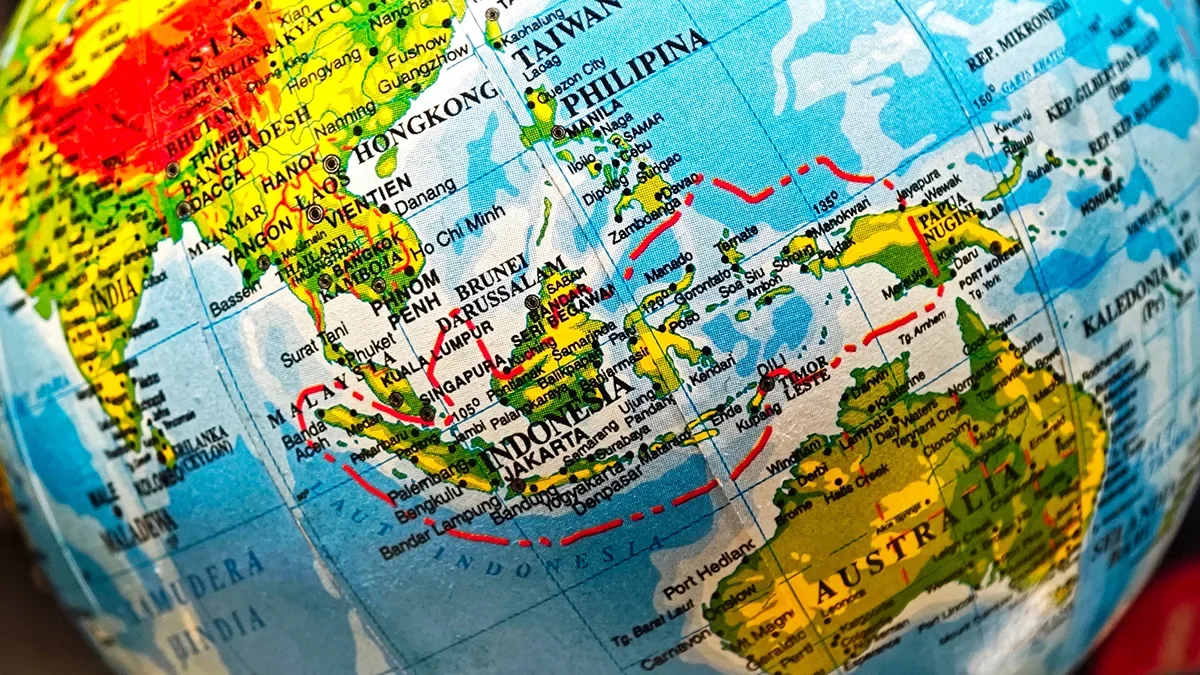(Re)in Summary
• Insurance claims from ex-Tropical Cyclone Alfred are mounting with estimated industry losses of up to A$2.5b, however the event was not as severe as it might have been.
• Most damage claims involve domestic properties with storm damage to roofs, fences and fallen trees.
• Commercial impacts were primarily limited to smaller establishments.
• Insurers were generally well-prepared as the cyclone’s southern track had been anticipated in disaster planning.
• Experts highlight the need to assess building codes with the region facing increased tropical system risks.
As insurers contend with a growing volume of claims following ex-Tropical Cyclone Alfred, analysts have said that the storm has not been “as severe as it might have been”, as communities and companies alike were largely prepared.
The Insurance Council of Australia reported a total of 63,600 claims as of 17 March, which compares to the 53,182 claims reported on Friday.
The storm was the first tropical cyclone to make landfall in southeast Queensland for over 50 years. Insured losses have been estimated between A$1.5bn and A$2.5b, according to a JBA Risk Management Report. Aon last week estimated losses to be “at least in the hundreds of millions of Australian dollars”, while S&P provided a pre-event loss estimate of A$2b based on similar events.

Sharanjit Paddam
Climate Analytics Principal at Finity ConsultingEx-Tropical Cyclone Alfred hit the mainland as a tropical storm rather than a Category 2 cyclone as initially projected, moderating early worries about wind damage and storm surges.
“In the end, Tropical Cyclone Alfred was not as severe as it might have been,” Sharanjit Paddam, Climate Analytics Principal at Finity Consulting, told (Re)in Asia. “We have not seen the level of wind damage and storm surge that could have occurred.”
But the slow-moving system posed other risks of its own, Paddam said. “The slowing system released a significant amount of rainfall, contributing to the level of flooding.”
Most of the damage seen so far are domestic property claims resulting from storm damage, Jonathan Hubbard, President of Crawford Australia, earlier this week.

Jonathan Hubbard
President of Crawford Australia“This includes damage to the upper parts of buildings, fences, leaking roofs, surface water runoff, and many trees that have fallen onto structures, leading to some structural damage, so it’s a mix of significant and smaller incidents,” he added. “We expect a surge of flood damage-related claims as services were restored to these properties over the last weekend and recovery begins.”
There was negligible impact on major commercial properties and shopping centres, with most commercial damages centred around smaller strip shops and similar establishments, Hubbard said. “For those businesses that have suffered a loss in ex-TC Alfred, it is less severe than similar past events.”
Flooding mostly occurred in low-lying areas with significant residential development, said Mark Thompson, Managing Director, Australia and New Zealand at loss adjuster Charles Taylor. “There was a surprising number of ‘water from above’ claims (i.e. gutters not coping with water volumes), as opposed to flood claims,” Thompson said.
The loss adjuster also observed an unexpected number of business interruption claims as a consequence of loss of power or blocked access, Thompson added.
The cyclone was much larger than that of a typical catastrophe in terms of geographic spread. “The cyclone has impacted property from north of the Sunshine Coast (Hervey Bay) all the way down to northern New South Wales,” Thompson said. “That’s over 400 kilometres of coastline.”

Mark Thompson
MD, Australia and New Zealand at Charles TaylorMost claims that Crawford has seen have come from Queensland so far, something which is backed up by ICA data, with claims in northern New South Wales slowly increasing as communities return to survey the damage, he added, with tourism likely to be impacted with significant beach erosion on the Gold Coast and Sunshine Coast.
The storm stripped many beaches of sand, weakening coastal infrastructure in some areas, said Guy Carpenter in its post-event report.
Storm surge levels reaching up to 0.5 meters above the high tide mark have caused significant coastal damage along the Gold Coast. This led to the formation of erosion cliffs as tall as 3 meters and affected most dunes located immediately behind the beaches, Guy Carpenter said.
The Insurance Council of Australia (ICA) said on Monday that ongoing claims data showed the event was not as significant as first feared.
“The rise in claims count over the weekend is a reassuring sign that clean-up and recovery is well underway across many parts of southeast Queensland and northern New South Wales,” said Kylie Macfarlane, Deputy CEO of the ICA.
Insurers largely well-prepared
The industry was largely well-prepared for the event, as insurers have war-gamed a scenario like Alfred for a very long time.
“We always knew that a cyclone this far south was possible, and in fact a path like Alfred’s was probably used as a Realistic Disaster Scenario (RDS) by many stakeholders in their disaster management plans,” Thomas Mortlock, Aon’s Head of Climate Analytics for Asia Pacific, tells (Re)in Asia.
Insurers and communities were able to prepare and enact disaster management plans as the cyclone sat off the coast for over a week and slowed down on its approach, Mortlock added.

Thomas Mortlock
APAC Head of Climate Analytics at AonPaddam noted that insurers had scaled quickly to respond to claims, activating their contingency plans. Despite this, the industry is still expected to face some challenges, including in identifying whether flood loss occurred before or after the 48-hour cutoff for recovery from the Cyclone Pool.
“The pool will provide significant protection for insurers, though the cost remains to be determined,” said Paddam.
Intense rainfall
Alfred’s unusual track pattern concerned meteorologists, as cyclones in the Coral Sea are often steered southward away from Australia by prevailing upper-level winds, said JBA Risk Management in its report. But Alfred deviated sharply and headed toward the coast of Australia, dumping record rainfall over Brisbane.
The city experienced its wettest day in over 50 years, with recorded rainfall of 275.2mm in some places, said Mansi Kaira, Managing Director of JBA Risk Management in Singapore. “The intensity and volume of rainfall over such a short period highlight a significant deviation from historical averages for the region.”

Mansi Kaira
Singapore MD at JBA Risk ManagementWhile most rainfall measurements in and around Brisbane had return periods of less than 10 years, a few stations recorded much rarer events, JBA said. Nimbin Post Office experienced rainfall with a 1-in-500 year probability, while Brisbane Road and Franklyn Vale both recorded events with a 1-in-300 year probability.
Three days after ex-Tropical Cyclone Alfred made landfall, the flood risk specialist firm announced it was introducing an inland flood risk model for Australia to help insurers refine their risk assessments.

Image Source: JBA Risk Management
JBA is hoping to generate tailored insights based on the current data from Alfred’s impact, and the firm is currently compiling findings and assisting clients to assess the potential implications of the storm, Kaira said.
“A clearer picture on how our model performed against real-world losses from Cyclone Alfred will emerge once we have the data on inundated areas and the buildings and businesses affected.”
Thomas Mortlock
APAC Head of Climate Analytics at AonUnusual but not unprecedented
While unusual, Alfred was not unprecedented — cyclones have historically caused significant flooding in and around the Brisbane area, with Tropical Cyclone Wanda in 1974 and the remnants of The Great Gold Coast Cyclone causing flooding in 1954.
“While we have had a few near misses, most Queenslanders living in the Southeast today would never have experienced a tropical cyclone prior to Alfred,” Mortlock said.
The risk of tropical cyclones tracking this far south is well captured in catastrophe loss models, Mortlock pointed out. “The possibility of a cyclone like Alfred is priced into the market, so we do not expect to see any major adjustments to underwriting cyclone risk because of this event.”
Had the intensity of Cyclone Alfred been maintained, the volumes and types of claims would have been far more severe, said Hubbard. “It’s fair to say that the cyclone losing strength due to a delayed landfall has certainly reduced some of the damage, along with the groundwater inundation and flooding we had anticipated.”
Hubbard noted that this did not mean that the current claims that they have received have not been significant. Cyclones remain inherently unpredictable, and their trajectories can change unexpectedly, he pointed out.
Jonathan Hubbard
President of Crawford AustraliaAlfred is still projected to be a significant loss event for Australia, though still far below historical cyclones like 1974’s Cyclone Wanda, which caused normalised losses of A$5.3bn in southern Queensland, according to Guy Carpenter analysis.
“The delayed landfall and localised flooding from ex-TC Alfred remind us that cyclones can defy expectations,” Hubbard said. “Regardless of initial forecasts, individuals and businesses must remain vigilant, prepare for unexpected shifts, and thoroughly understand their coverage.”
Sharanjit Paddam
Climate Analytics Principal at Finity ConsultingOverall, the event was a wake up call for the region, Paddam says. While extreme wind damage did not hit the region, regulators will have to revisit building codes to make sure they are sound in a changing climate.
“SE Queensland and Northern New South Wales are vulnerable to tropical systems, and we need to take seriously the risk of southward expansion of such systems.”














